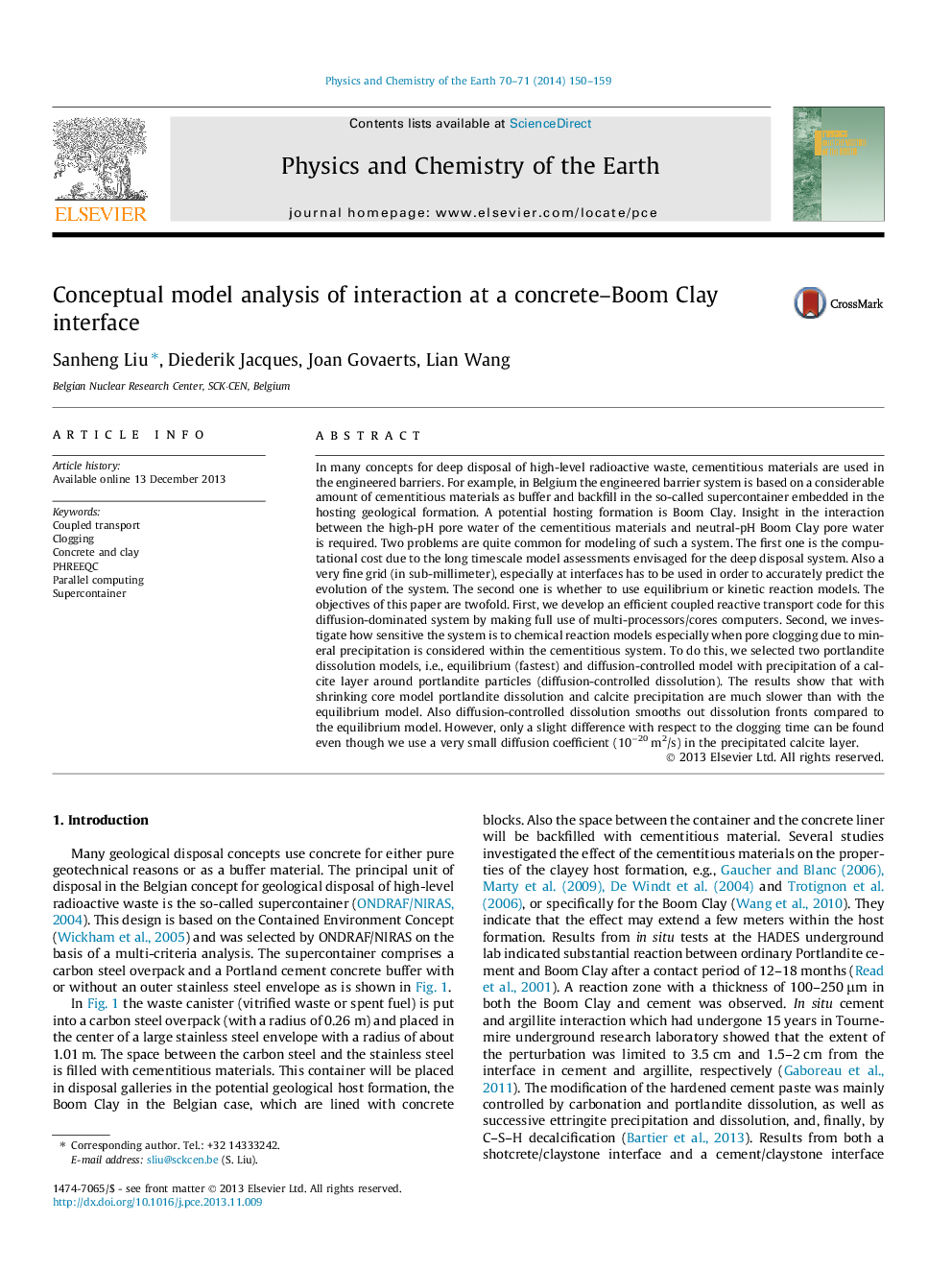| Article ID | Journal | Published Year | Pages | File Type |
|---|---|---|---|---|
| 4720991 | Physics and Chemistry of the Earth, Parts A/B/C | 2014 | 10 Pages |
•We develop a parallel coupled model for interaction between concrete and clay.•We compare equilibrium and diffusion-controlled chemical reaction models.•No significant differences are found from different models due to clogging.•Clogging time depends on grid discretization.
In many concepts for deep disposal of high-level radioactive waste, cementitious materials are used in the engineered barriers. For example, in Belgium the engineered barrier system is based on a considerable amount of cementitious materials as buffer and backfill in the so-called supercontainer embedded in the hosting geological formation. A potential hosting formation is Boom Clay. Insight in the interaction between the high-pH pore water of the cementitious materials and neutral-pH Boom Clay pore water is required. Two problems are quite common for modeling of such a system. The first one is the computational cost due to the long timescale model assessments envisaged for the deep disposal system. Also a very fine grid (in sub-millimeter), especially at interfaces has to be used in order to accurately predict the evolution of the system. The second one is whether to use equilibrium or kinetic reaction models. The objectives of this paper are twofold. First, we develop an efficient coupled reactive transport code for this diffusion-dominated system by making full use of multi-processors/cores computers. Second, we investigate how sensitive the system is to chemical reaction models especially when pore clogging due to mineral precipitation is considered within the cementitious system. To do this, we selected two portlandite dissolution models, i.e., equilibrium (fastest) and diffusion-controlled model with precipitation of a calcite layer around portlandite particles (diffusion-controlled dissolution). The results show that with shrinking core model portlandite dissolution and calcite precipitation are much slower than with the equilibrium model. Also diffusion-controlled dissolution smooths out dissolution fronts compared to the equilibrium model. However, only a slight difference with respect to the clogging time can be found even though we use a very small diffusion coefficient (10−20 m2/s) in the precipitated calcite layer.
